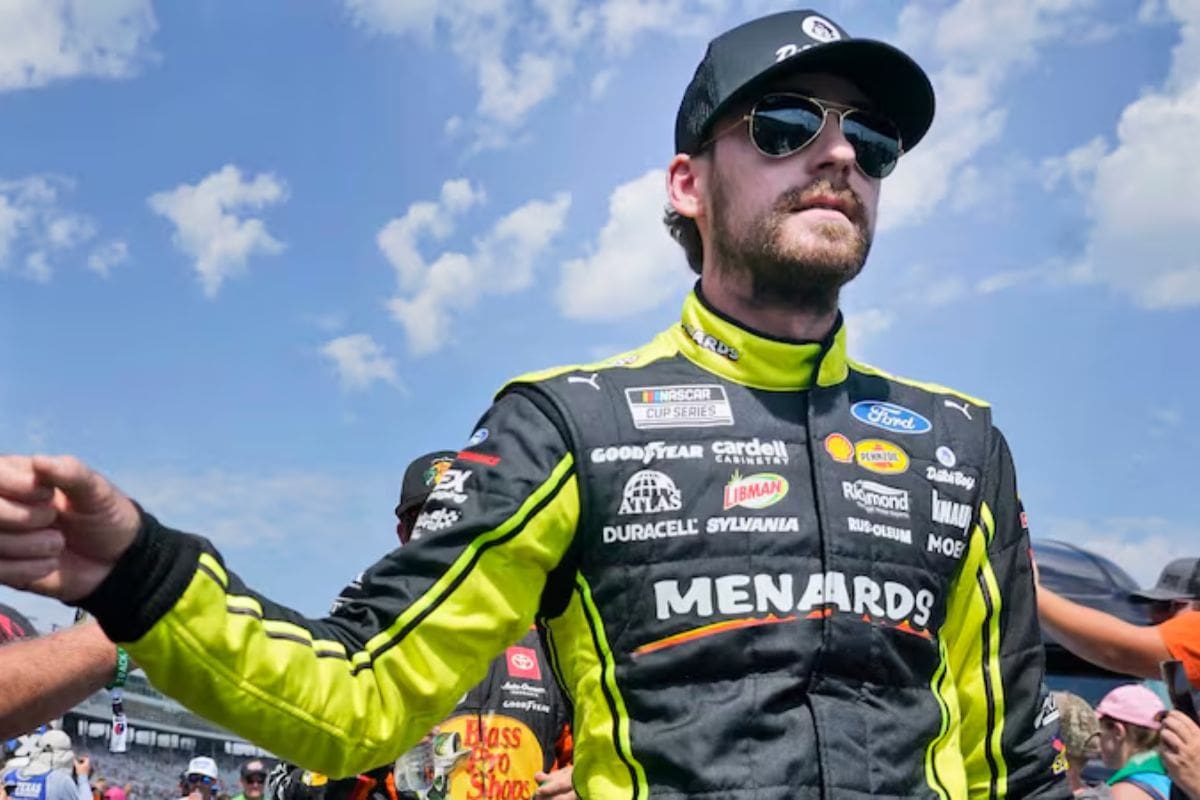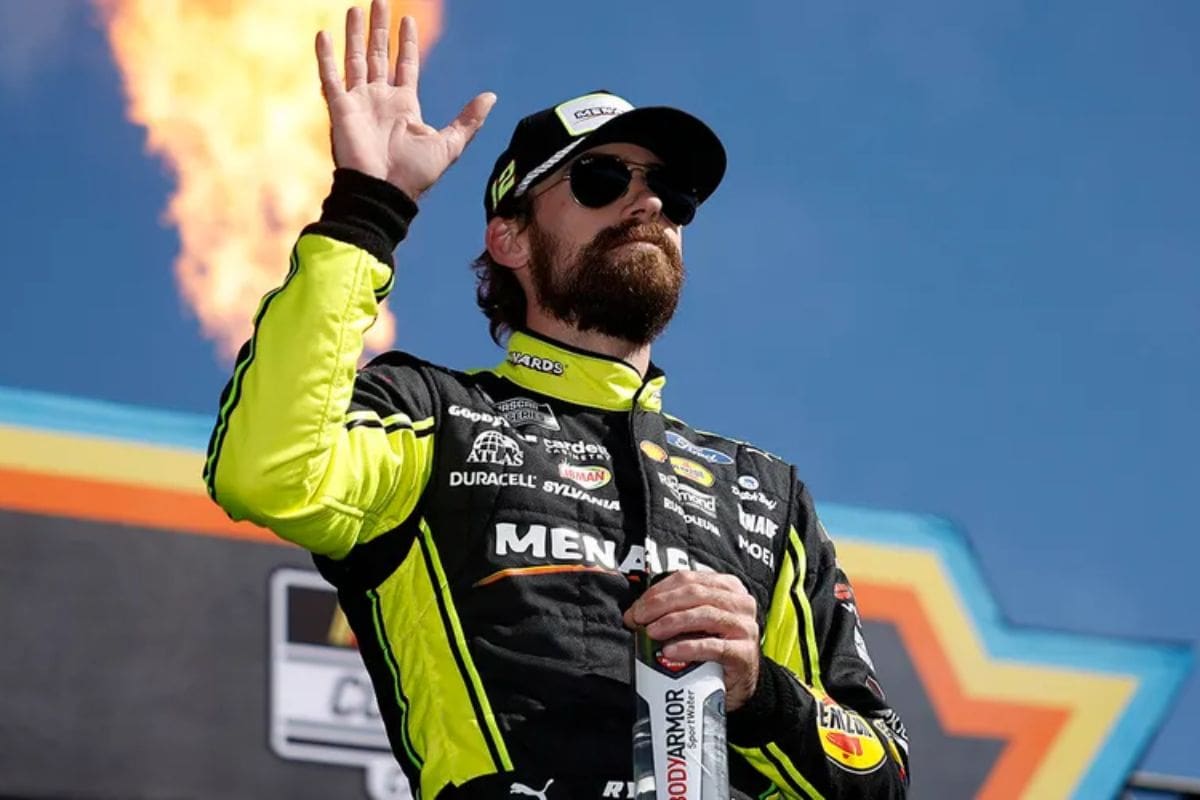Ryan Blaney’s Revelation Sparks Debate: Ryan Blaney’s surprising insights regarding the relocation of the Busch Light Clash to Bowman Gray Stadium have ignited a firestorm of debate and fascination within the NASCAR community. His personal connection to the stadium, enriched by childhood memories and fan interactions, spotlights the venue’s deep-rooted significance and immersive atmosphere. Additionally, Blaney’s commentary accentuates the strategic decision by NASCAR to diversify event locations, aiming to breathe new life into the racing calendar while honoring the sport’s rich heritage. By spotlighting Bowman Gray’s legendary status and unique characteristics, his revelation highlights a critical moment in motorsports history. This sets the stage for exploring how such decisions will impact the future of NASCAR.
Key Takeaways
- Ryan Blaney shared personal childhood memories of Bowman Gray Stadium, enhancing its significance in the NASCAR community.
- Blaney’s reflections on the stadium’s immersive atmosphere and spirited fans contribute to the ongoing debate about its inclusion in NASCAR’s calendar.
- His stories underline the importance of preserving the legacy of such historic venues in motorsports.
- The relocation of the Busch Light Clash to Bowman Gray Stadium, as advocated by Blaney, sparks community and fan base discussions.
- Blaney’s revelations bring attention to the potential of Bowman Gray Stadium to host high-profile NASCAR events, influencing the sport’s future direction.
NASCAR’s Venue Discussion Sparks Interest
NASCAR’s quest to diversify its event locations, often leading to heated debates within the community, has recently intensified with the organization’s acquisition of Bowman Gray Stadium, sparking widespread curiosity and speculation about its future role in the racing circuit. This move is seen as an unconventional choice given Bowman Gray’s unique place in the heart of racing tradition, often referred to as ‘the Madhouse’ for its high-intensity races and fan excitement. The stadium, steeped in a rich history of motorsports, presents a blend of venue potential and a competitive edge that could greatly enhance NASCAR’s offerings.
The strategic acquisition highlights NASCAR’s commitment to innovating its racing calendar and engaging with a broader audience. By embracing a venue with a storied past and a reputation for thrilling races, NASCAR aims to inject new life into the sport while honoring its roots. This approach not only caters to long-time fans but also piques the interest of newer audiences attracted by the promise of fan excitement and a distinctive racing experience.
The potential integration of Bowman Gray Stadium into NASCAR’s future events could redefine the competitive landscape, leveraging its unconventional choice to enrich the sport’s diversity and dynamism.

Ryan Blaney’s Connection to Bowman Gray Stadium
Building on the recent acquisition of Bowman Gray Stadium by NASCAR, Ryan Blaney’s vivid recollections of racing at this iconic venue during his childhood add a deeply personal dimension to the discussion on its future role within the racing circuit. His nostalgic memories not only serve as a confirmation to the stadium’s immersive atmosphere but also spotlight the unique interaction between racers and the spirited fans that is characteristic of this historic track. Blaney’s reflections provide an invaluable personal glimpse into the vibrant culture that defines Bowman Gray Stadium, underscoring its significance beyond just a racing venue.
“Yeah, I mean it’s, yeah I grew up right there in the Triad town over from Winston. And I raced there a few times. I ran Bandolero there, Legends car, and it was an experience unlike anything I’ve ever been a part of. And I’ve been to a few modified races there back in the day. But when you have young kids shooting you the bird, and I was a young kid at that time. I was 9 years old, and I had kids younger than me shooting me the bird while I was going. It just shows you the atmosphere there, you know?” Blaney quoted
“And it’s wild, so yeah. I mean we’ll see what they do with that in the future. I think there’s opportunities there to me, that’s a possible clash replacement for the Coliseum. I mean, it’s the same thing pretty much, so we’ll see what they go with that. But I think it’s good. I mean why not snag it up and have it at your disposals. So I think it’s good,” blaney further quoted
Through Blaney’s lens, we grasp the essence of Bowman Gray Stadium, not merely as a backdrop for racing events but as a crucible for the formation of lifelong passions and memories. His narrative elevates the conversation surrounding the track’s future, advocating for a preservation of its legacy that respects its past while looking forward to its potential to inspire new generations of racers and fans.
Bowman Gray Stadium’s Rich Heritage
Exploring the storied history of Bowman Gray Stadium reveals its multifaceted role in shaping the landscape of American motorsports since its establishment in 1937. This venerable arena has witnessed numerous historic milestones, underpinning its celebrated status within the racing community. Evolving from a multi-use sports facility to a cornerstone of NASCAR culture, the stadium’s inherent adaptability highlights its lasting relevance.
Bowman Gray Stadium’s track has been graced by legendary drivers, each contributing to the rich tapestry of its legacy. These competitors have engaged in thrilling races, etching their names into the annals of motorsports history through sheer skill and determination. The venue has become synonymous with iconic moments that resonate far beyond the roar of engines, reflecting its profound cultural significance.
Moreover, the stadium’s journey from hosting collegiate football to becoming a beacon for auto racing enthusiasts encapsulates a remarkable transformation. Records such as Tim Brown’s fastest lap highlight not only individual excellence but also the competitive spirit that defines Bowman Gray Stadium. Through decades of change, it has remained a crucial stage where motorsports history is not only observed but made.
The Venue’s Unique Characteristics
What sets Bowman Gray Stadium apart in the world of motorsports is not only its storied history, but also its distinctive architectural design, which fosters particularly intense racing dynamics due to its tight turns and short straightaways. This unique layout has not only heightened the racing intensity but also bolstered local support, drawing fans who thrive on the edge-of-the-seat action that such a configuration guarantees. This intensity is a magnet for drama, which is notably ignited during events like the Busch Light Clash.
Moreover, the venue’s versatility is a critical factor in its selection for high-profile events. Its ability to host both racing and football events illustrates its multifaceted role within the community. This versatility underlines its candidacy for the Busch Light Clash, promising a venue that can handle the multifarious demands of such a prestigious event.
| Feature | Impact on Racing | Contribution to Drama |
|---|---|---|
| Tight turns | Heightened intensity | Increased confrontations |
| Short straightaways | Faster lap times | Close competitions |
| Venue versatility | Attracts diverse events | Varied audience engagement |
| Local support | Amplifies atmosphere | Fuels rivalries |
This table encapsulates how the architectural design and multifunctionality of Bowman Gray Stadium not only influence the racing dynamics but also significantly contribute to the drama surrounding events like the Busch Light Clash.

Community and Future Prospects
The prospect of relocating the Busch Light Clash to Bowman Gray Stadium has ignited a vibrant community dialogue, emphasizing the event’s potential to redefine NASCAR’s engagement with its fanbase and venues. This move signals a strategic planning milestone, aiming not only to refresh the NASCAR calendar but also to deepen community engagement through the storied history and unique atmosphere of Bowman Gray Stadium. The conversation surrounding this potential relocation reflects a keen understanding of the importance of venue transformation in elevating event excitement and fan anticipation.
Integrating Bowman Gray Stadium into NASCAR’s venue lineup embodies a forward-thinking approach that prioritizes fan experience and community involvement. It highlights the organization’s commitment to not just maintaining, but enhancing the vibrancy and appeal of its events. This shift represents an opportunity for NASCAR to further embed itself in the cultural fabric of its host communities, fostering a sense of ownership and pride among fans.
As NASCAR navigates the complexities of venue selection and event planning, the focus on strategic alignment with community values and desires emphasizes its dedication to a future where fan engagement and venue dynamism play crucial roles in shaping the sport’s trajectory.
News in Brief
The disclosure by Ryan Blaney regarding the NASCAR Busch Light Clash at Bowman Gray Stadium has not only added interest to the event but also highlighted the venue’s significant heritage and unique characteristics.
Bowman Gray Stadium, with its rich history and distinct features, stands as a crucial site in motorsport culture.
This development emphasizes the importance of venue selection in enhancing the spectator experience while fostering community engagement and preserving the legacy of motorsport for future generations.
Our Reader’s Queries
Q: What is Ryan Blaney’s annual salary?
A: Ryan Blaney’s annual salary with Team Penske is reportedly around $1.9 million. This amount does not include earnings from endorsements or season bonuses. As the reigning Cup Series champion, Blaney is expected to receive a raise.
Q: Has Ryan Blaney ever won a championship?
A: Key Accomplishments of Ryan Blaney:
Also Read: Ryan Blaney Slams Goodyear: Bristol Tire Outrage!
